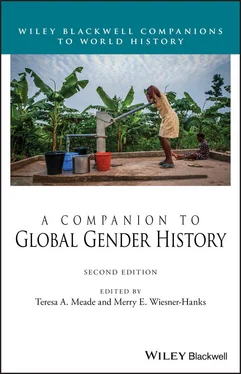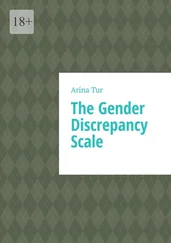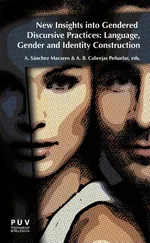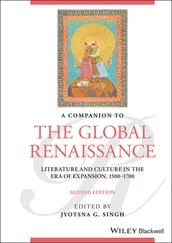Almost everywhere we look, whether it be ancient Greece or Rome, medieval China or Europe, Renaissance Italy, precolonial Africa, indigenous America, early modern England, or revolutionary America or France, political elites told themselves and their subjects and constituents stories about how their societies had first emerged and how the right to exercise power and to make law had come to rest with them. In virtually all of these cultures, whether ruled by divine‐right absolute monarchs, hereditary aristocracies, or councils of citizens, law and politics depended upon a model of familial, and thus gender and sexual, relations for their conceptualization. Kinship, it appears, served as the model not only for most forms of social organization but for most forms of political ordering as well.
This may seem commonsensical, almost natural, but it is vital to remember that family, gender, and sexual arrangements are always fashioned within particular political, social, economic, and cultural circumstances. In consequence, they have differing effects for individuals according to gender; any legal and political worldview that depends upon a certain familial model will replicate those differing effects for individuals according to gender. Thus, a social order based on patriarchy, in which the law of the father over his wife and children prevails, underpins a political ordering in which authority rests with men, producing laws and relations of authority in which women and underage males suffer disabilities. Attempts to ameliorate such political and legal disabilities necessarily have to challenge the legitimating theories or cosmologies that inform them. This situation helps to explain why eighteenth‐century French revolutionaries turned to an idiom of brotherhood or fraternity to justify and narrate the toppling of their absolute monarch; and why feminists in the nineteenth and twentieth centuries, looking to implement a social and political order that would recognize and value women as full citizens, sought out historical or anthropological examples of matriarchy through which they could demonstrate that a previous “natural” order of beneficent and egalitarian women‐controlled and women‐dominated societies had been overthrown by authoritarian, inegalitarian patriarchal orders. In both instances, they sought to establish their own mythologies of law and politics that legitimated their contemporary political aims.
Patriarchy has an ancient pedigree, arising, it appears, at about the same time that ownership of property by individual households became predominant in the societies of the Near and Middle East around 3000 BCE and later in India, Asia, Mesoamerica, and the Mediterranean. The heads of households, or patriarchs (the word deriving from the Latin for father, pater) , in the earliest societies for which we have written records, may have sought to maintain their control over property by controlling the actions of the members of their households, especially the women, ensuring that their legitimate offspring, and not some spurious claimant, inherited their wealth. The earliest forms of political units derived from family and kin groups in which fatherhood actually and/or figuratively served as the model for the exercise of power in larger clan, tribal, village, or state structures. The making of law and the exercise of power have thus always been gendered, and as far as the historical record can tell us, patriarchal in nature, though the actual playing out of day‐to‐day political operations might vary considerably, as we shall see below. In the ancient kingdoms of Mesopotamia and Egypt, and in other, more modern states like medieval China or post‐revolutionary France seeking to impose or maintain patriarchal regimes, rulers implemented laws that regulated women’s marital, sexual, and reproductive practices, making them subjects of their husbands and fathers as well as of their kings. In sixth‐century BCE Greece, for example, Solon the “lawgiver” and so‐called second founder of Athens, reorganized the matrimonial system in the process of creating a new political community, the famous Athenian “democracy.” In the aftermath of civil war in which poor householders had arrayed themselves against rich ones, he instituted a political system in which landless as well as landowning men become citizens. He did so by equalizing the marriage portions, the dowries, that brides might bring to their marriages, making women a kind of placating circulating commodity. Because rich fathers could not endow their daughters with greater dowries than poor ones, rich and poor households could exchange women in an effort to ameliorate tensions based on wealth, reduce the risk of civil war, and establish a peaceful polity (Leduc, 1992).
In the developing states of the ancient world, claims to rule and to make law often rested upon references to male divinity: Egyptian pharaohs, Mesopotamian princes, and Chinese, Japanese, or Mayan emperors recited narratives that linked their families to a single masculine deity who was credited with having created life, thus providing sacred legitimation for what was no more than the bald exercise of power by one family over all others. Within the dynasties constituted as divine, female relatives might and did stand in as rulers when male heirs failed to materialize in order to preserve the dynastic line, their claim to rule deriving from their familial relationship to the deceased king or missing successor, not to any right they enjoyed themselves as women. In Egypt, for example, queens like Nefertiti and Hatshepsut ruled in place of male pharaohs. Hatshepsut, significantly, appears bearded in all pictorial or plastic depictions of her, the beard being the emblem of Egyptian royalty, a reminder that rulership was a masculine prerogative. Wu Zhao, a Tang empress who usurped the authority of the male line and ruled in her own right from 690 to 705 CE as the only female emperor in Chinese history, had to construct a kind of cosmology that legitimated her unprecedented and shocking action. She created a Chinese character for the concept of human being that foregrounded the process of birth as flowing from one woman, a function usually presented as the result of the masculine, dominant, creative yin drawing forth power from the feminine, properly inferior, receptive yang . She also fashioned a character for her first name that showed the sun and the moon moving over heaven, a depiction that suggested not simply that Wu was the Daughter of Heaven, as emperors were Sons of Heaven, but might in fact be heaven itself (Tung, 2000).
Biological women might rule as pharaohs or emperors, but the gender of rule was masculine, a trait that did not always correspond to a male person. Under the Tang dynasty (618–907 CE), court ministers sometimes represented their relationship to the emperor through the hierarchical masculine and feminine principles of yin and yang , in which the male creative force of the emperor activates the receptive female power of his imperial servants. Courtiers further articulated their servile status vis‐à‐vis the emperor by styling themselves minister‐concubines , a clear reference to the masculinity of the ruler and the femininity of those he ruled. One of the most effective monarchs of England, indeed, all of Europe, Elizabeth I, recognized the long‐standing gender principle of rule when she reassured her subjects in the late sixteenth‐century, “I know I have the body of a weak and feeble woman, but I have the heart and stomach of a king.” She referred to herself as a “Prince” and claimed for herself the qualities of masculinity that legitimated her royal power. In more modern times, English and American reformers from the eighteenth century onward based their claims for political participation on their “manliness,” a set of conditions that not every male person possessed, and without which they should be excluded from political life. Aristocrats and working‐class men, for instance, in the eyes of bourgeois English “radicals” and American patriots, lacked the requisite manliness to govern either themselves or their respective nations; the former because they seemed in thrall to women and to “effeminate” French fashions, the latter because they lacked the financial means that gave them independence. In both cases, their masculinity, though not their maleness, was in question (Colley, 1992; Clark, 1997; Kann, 1998).
Читать дальше












